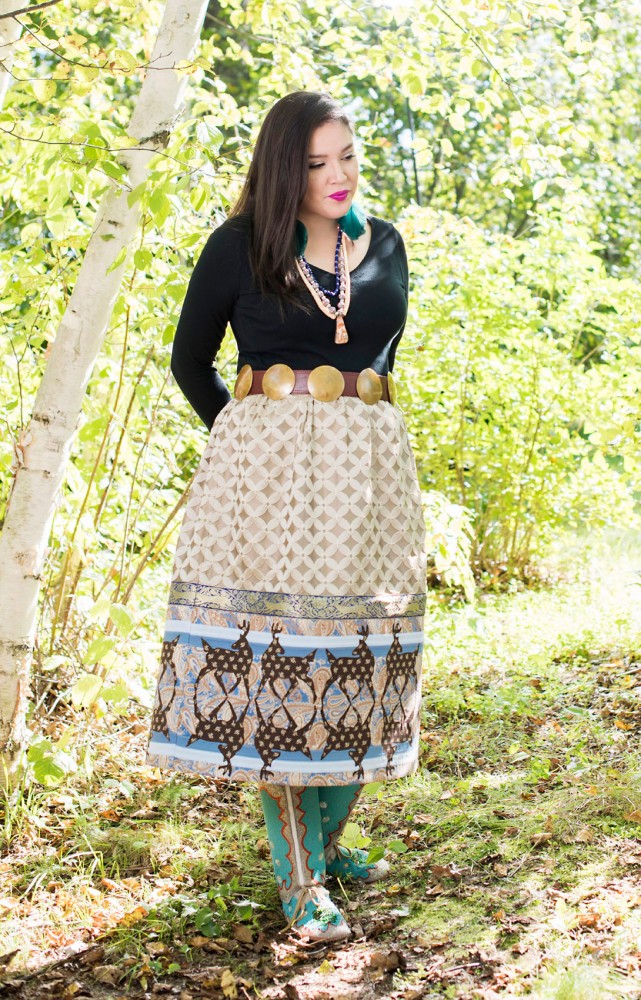Delina White learned traditional Native beadwork from her grandmother. When White’s grandmother assembled handbags in her Onigum, Minn., home, she let 6-year-old White play with her beads and sequins. Beadwork kept White occupied in her grandmother’s two-room home, which lacked both running water and electricity.
“I would just start stringing the beads and doing whatever I wanted. It was very unstructured,” White said. “[Then] it just took off from there. Who knew that I would take it this far?”
On Friday, White brings her traditional Native apparel design to the Tweed Museum of Art on the University of Minnesota’s Duluth campus. It’s the final stop for White’s Great Lakes Woodland Skirts Project, a fashion show created by White and her two daughters that weaves Native American apparel design with local history.
“It has always been a dream of ours to do something like this,” Sage Davis, the younger of White’s two daughters, said before a crowded show at Minneapolis’ All My Relations Gallery. “We’re so happy everyone could come out to see everything.”
The project highlights the connection between the Great Lakes area Native tribes during the 17th and 18th centuries. Today these tribes are located in different parts of the
continent, but once shared designs, ideas and materials. This connection explains why Native American tribes can have different dialects but still understand one another, White said.
The Great Lakes Woodland Skirts Project pulls from each of these tribes and utilizes materials available to the tribes at the time, either through the environment or through trade, including German silver, gemstones and shells from the east coast. White and her daughters use traditional techniques, too.
The leather in the skirts and accessories is brained (tanned using animal brains), which leaves the leather soft enough for a needle to pass through. Commercially-tanned leather is too tough for handwork.
“For our culture, skirts are a traditional thing for us,” White said. “It’s a part of who we are as Native women.”
Also on display is otter tail-style ribbon work, used by the Iroquois, Mohawk, Oneida and Ho-Chunk tribes in the 1700s. This style involves cutting and layering back the ribbon, exposing the fabric beneath. This style of ribbon work is both time-consuming and detail-oriented. Since White and her daughters made all the skirts and accessories, they used a modern sewing machine, where handwork wasn’t required.
“I like to see my work in action as a kinetic form of art,” Lavender Hunt, White’s eldest daughter, said. “I like to see the dancers and singers wear my work. That helps when I create, [finding] how I want the skirts to flow, how I want them to fit.”
From the first documented interaction of Great Lakes-area tribes with the Europeans who traveled up the Saint Lawrence River, Native women were wearing skirts. Still today,
Native women wear their traditional skirts to ceremonies and special gatherings, a practice White and her daughters hope to open up.
“We’re encouraging women to wear their skirts in all occasions, not just ceremonies or special occasions, so they can feel they’re sharing their culture,” White said. “I’ve gotten comments like, ‘Oh, I’m going to go home and make a skirt now,’ or ‘I’m going to go home and make lots of skirts.’ [It’s exciting] to know we’ve inspired people to go and make their skirts.”








